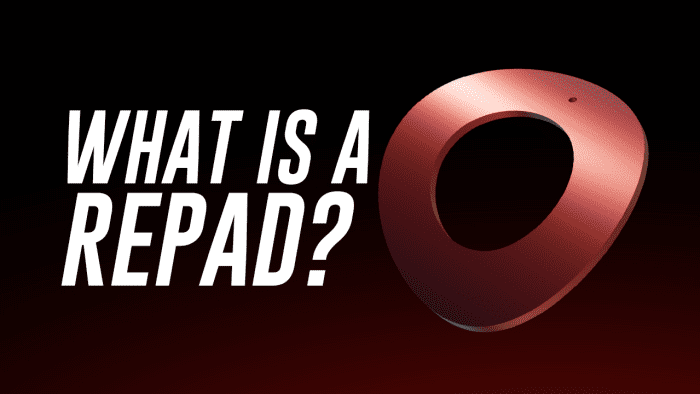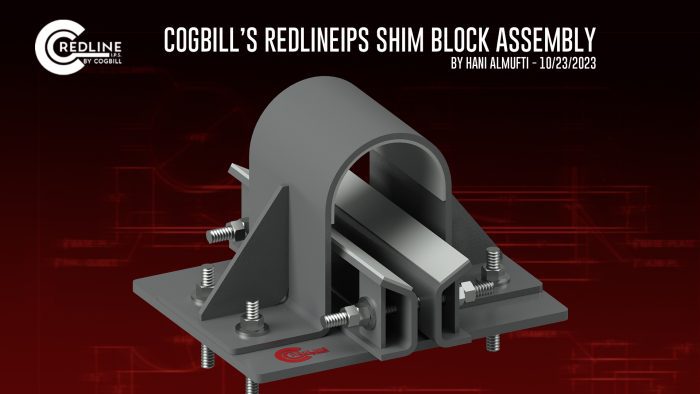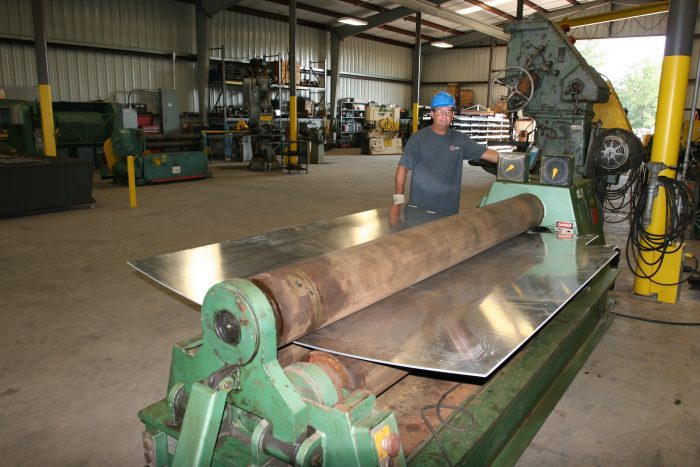Corrosion Under Pipe Supports
Corrosion Under Pipe Supports (CUPS): Causes & Remedy
A piping system commonly relies on a supportive structure, typically constructed from durable materials such as structural steel, concrete, or wood. However, these systems are constantly susceptible to external corrosion, especially corrosion under pipe supports (CUPS). This problem is particularly worse in regions with coastal exposure and offshore platforms where the presence of salt and humidity exacerbates the issue.
Causes
Various factors contribute to pipe external corrosion, some of which are outlined below:
1 – Erosion of the pipe’s protective paint coating is primarily attributed to the friction generated between the pipe and its supporting structure. This friction arises from both noticeable and imperceptible movements of the pipe, which can be attributed to several factors, including:
The presence of attached rotating equipment.
The flow of fluids within the pipe.
Temperature fluctuations between day and night, as well as seasonal variations, which cause expansion and contraction of the pipe.
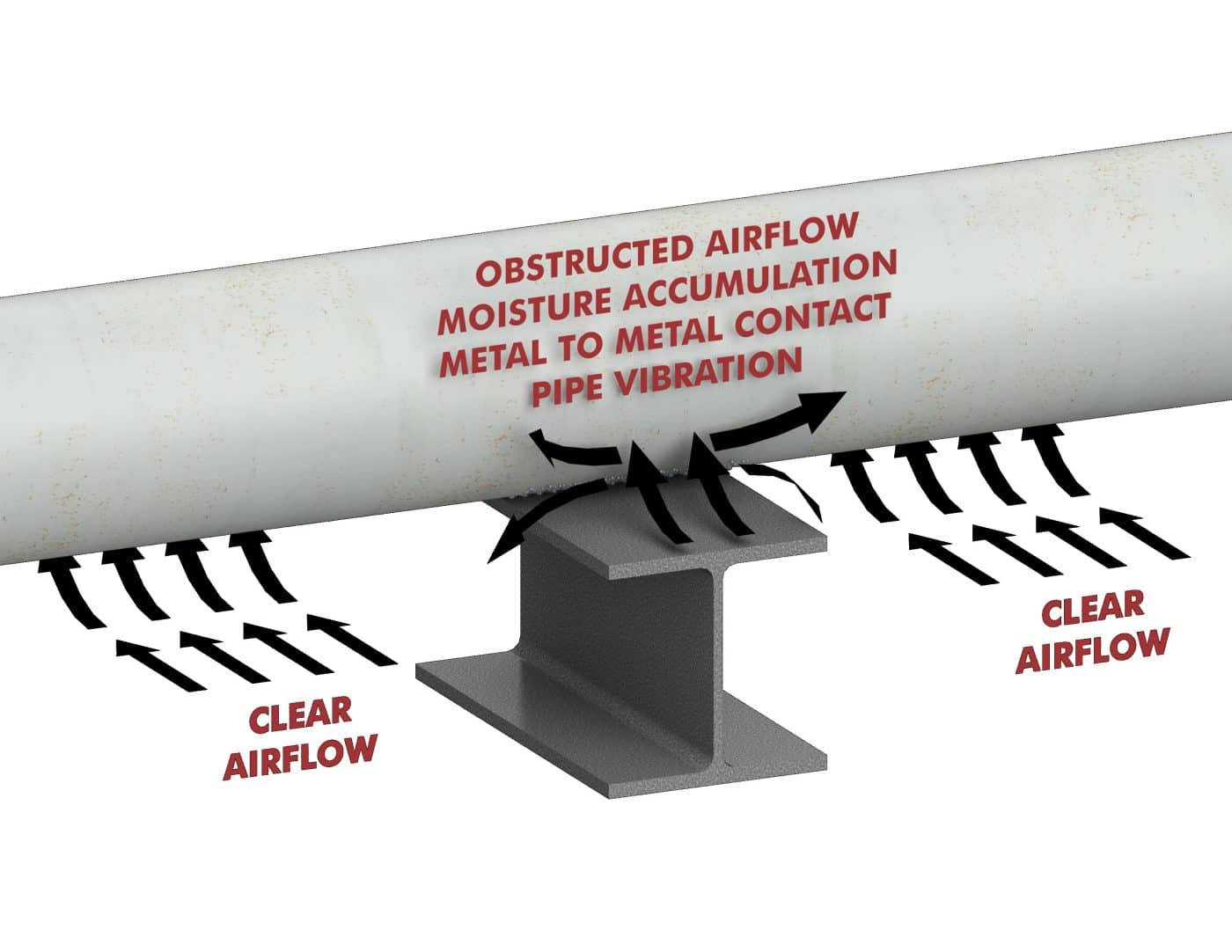
Over time, the cumulative effects of these friction forces gradually wear away the protective paint coating, leaving the surface of the pipe exposed to environmental elements. Consequently, this exposure leads to the onset of corrosion.
2 – Crevice corrosion represents a localized and concerning form of corrosion that specifically occurs within narrow gaps or crevices found between surfaces, such as the junction between a pipe and its supports. This type of corrosion is primarily triggered by the entrapment of corrosive agents, including moisture, salts, chemicals, and pollutants, within these crevices. The stagnant conditions within these confined spaces give rise to differential oxygen concentrations and concentration cells, which accelerate the corrosion process. The presence of the crevice restricts oxygen access and hampers the flow of protective substances like inhibitors, thereby fostering a corrosive environment.
Over time, crevice corrosion can lead to the deterioration of metal surfaces, manifesting as pitting, cracking, or even structural failure. In the case of corrosion occurring under pipe supports, the concentrated corrosion within crevices can also compromise the integrity and stability of the supporting structures themselves, further jeopardizing the overall integrity of the entire piping system.
3 – Galvanic corrosion, a noteworthy form of corrosion, arises when two dissimilar metals or alloys come into electrical contact within the presence of an electrolyte, such as moisture or a corrosive fluid. 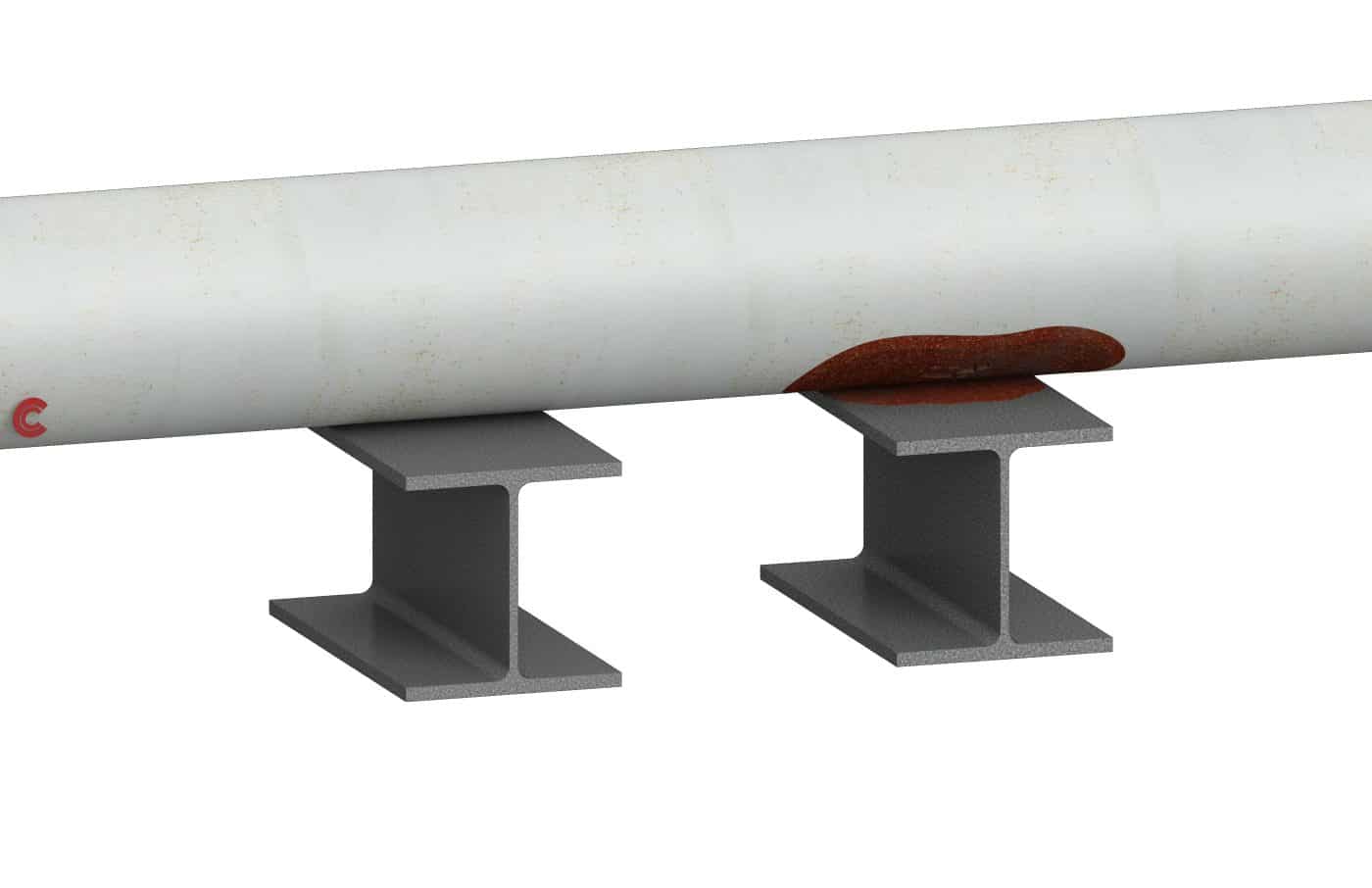
Over time, galvanic corrosion can result in metal loss, deterioration of the affected components, and potentially lead to structural issues within the piping system. It is crucial to carefully consider the compatibility of metals used in the construction of pipe supports to minimize the risk of galvanic corrosion and ensure the long-term integrity of the system.
4 – Microbiologically-influenced corrosion (MIC) is another significant cause of corrosion under pipe supports. MIC occurs when microorganisms, such as bacteria, fungi, or algae, colonize the surface of the pipes and create an aggressive environment. These microorganisms can produce corrosive byproducts, such as organic acids or sulfides, which attack the metal surface and promote corrosion. Additionally, the formation of biofilms, a slimy layer created by microbial activity, can trap moisture and corrosive substances against the pipe surface, accelerating the corrosion process.
New, Innovative CUPS Solution
Cogbill’s RedLineIPS SmartPad System, a patent-pending composite (FRP, fiber-reinforced plastic) solution, offers a groundbreaking approach to combatting external corrosion in above-ground industrial piping systems, specifically at pipe support points. While the concept of using an FRP saddle is not new, the system introduces innovative modifications to the pads themselves and utilizes a novel methodology for adhering the pads to the pipes, resulting in extraordinary benefits. The system works in the following manner:
The SmartPad System consists of a saddle-shaped FRP wear pad, FRP bands to affix the pad to the pipe, and a specialized tool to apply the bands, in seconds.
The SmartPads saddle the pipe from underneath, protecting its paint coating from friction, and thus protecting it from corrosion.
The system is completely non-metallic, entirely built from quality FRP material, which is UV stable and load-tested. Since the pads sit between a pipe and its supports, they completely eliminate metal-to-metal contact, thus preventing galvanic corrosion.
The pads raise the pipe above its support, promoting airflow and minimizing crevice corrosion.
The system’s innovative installation process allows the pads to be installed in seconds, removed in seconds to allow visual inspection for external corrosion, and then reinstalled in seconds. This is done using our FRP SmartBands and our SmartTool, which quickly and easily applies enough force to the bands to ensure the pipe does not move from its support location. This significantly reduces labor costs, renders epoxy and welding unnecessary, and negates the need for expensive corrosion inspection methods such as ultrasound and radiography.
The system components are rated for 20-30 years and even longer, while always allowing for quick corrosion inspection at negligible cost.
For information on the system and how it protects piping systems from external corrosion, as well as its advantages over other solutions, please refer to the following:
Website: www.SmartPadSystem.com

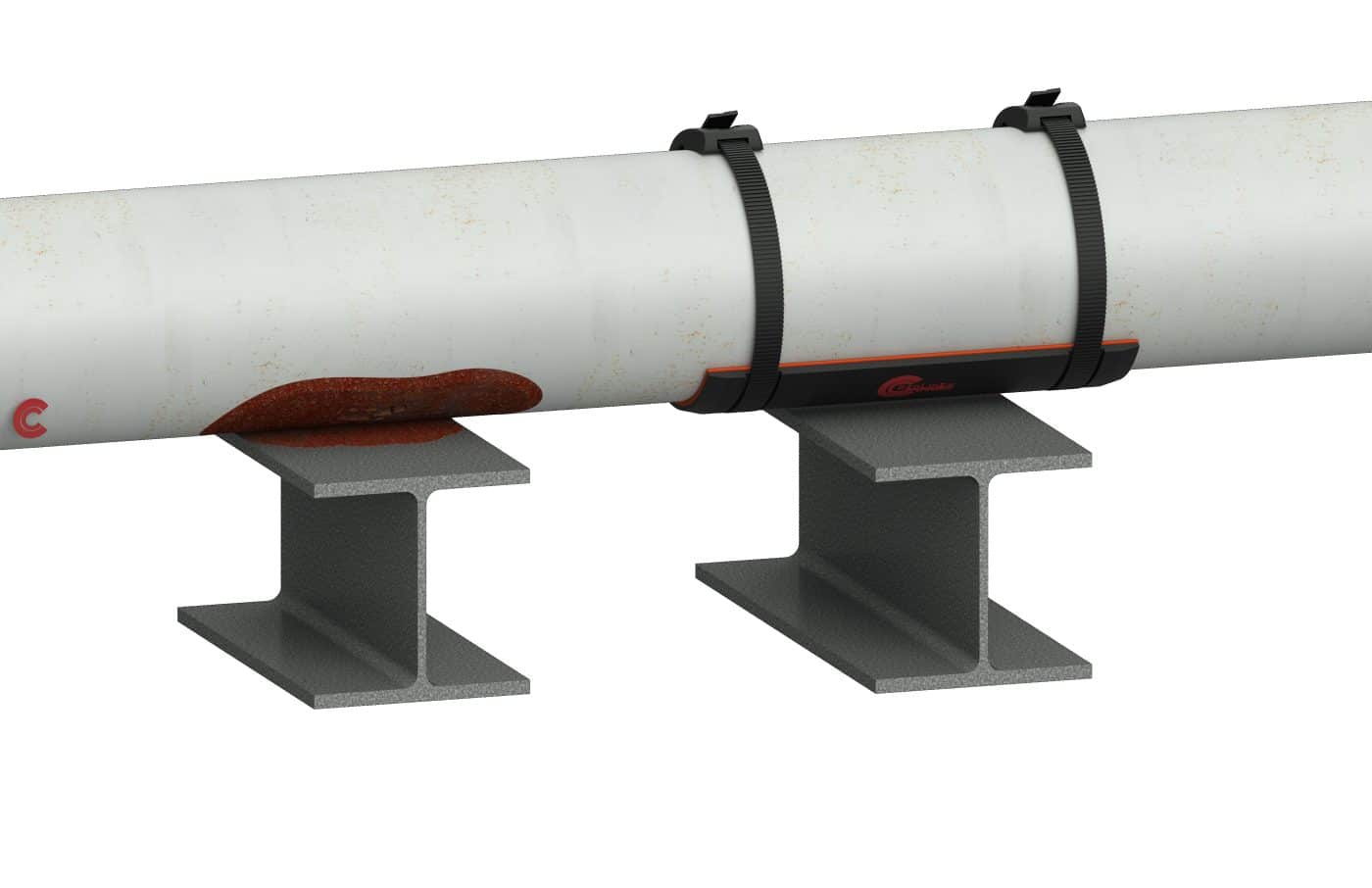
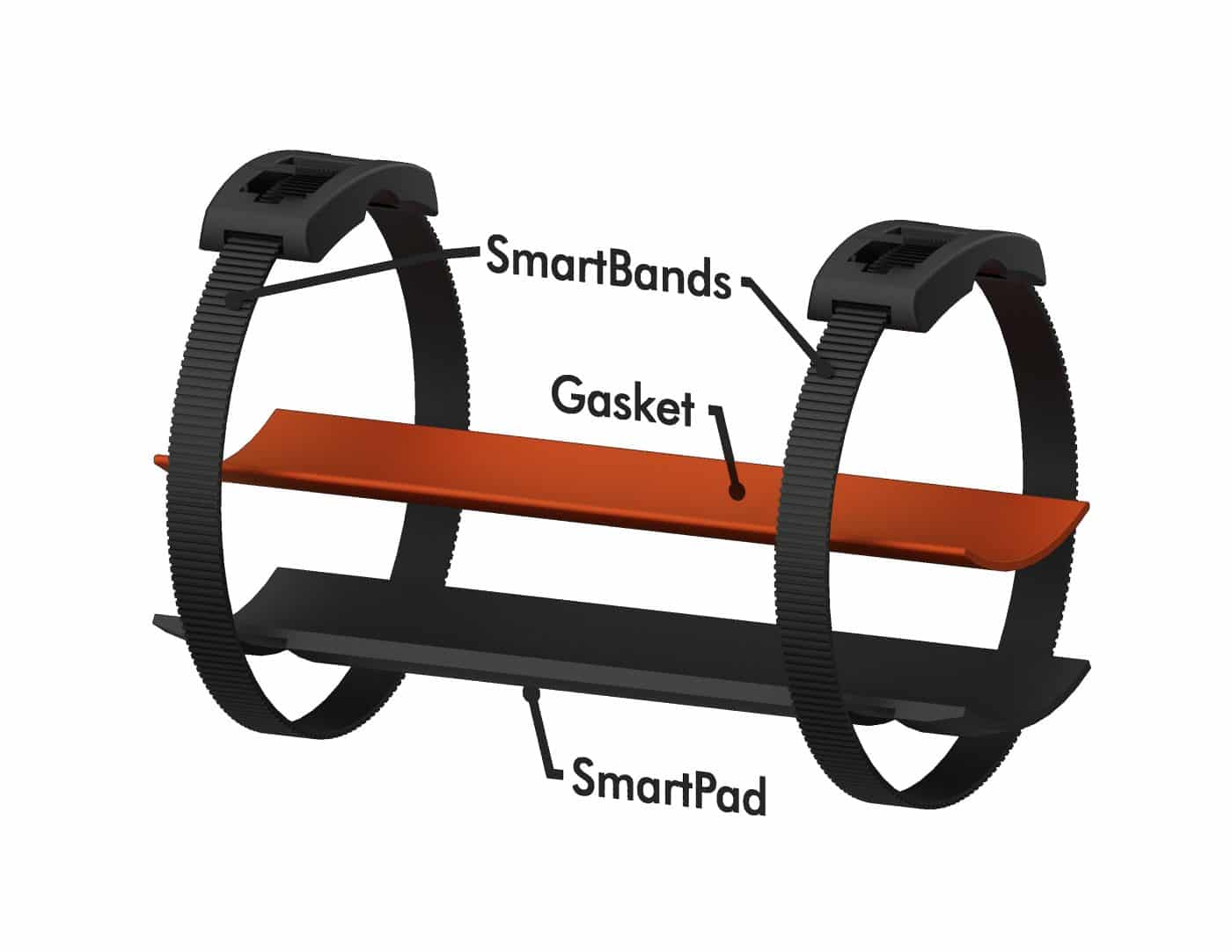 The system’s innovative installation process allows the pads to be installed in seconds, removed in seconds to allow visual inspection for external corrosion, and then reinstalled in seconds. This is done using our FRP SmartBands and our SmartTool, which quickly and easily applies enough force to the bands to ensure the pipe does not move from its support location. This significantly reduces labor costs, renders epoxy and welding unnecessary, and negates the need for expensive corrosion inspection methods such as ultrasound and radiography.
The system’s innovative installation process allows the pads to be installed in seconds, removed in seconds to allow visual inspection for external corrosion, and then reinstalled in seconds. This is done using our FRP SmartBands and our SmartTool, which quickly and easily applies enough force to the bands to ensure the pipe does not move from its support location. This significantly reduces labor costs, renders epoxy and welding unnecessary, and negates the need for expensive corrosion inspection methods such as ultrasound and radiography. 